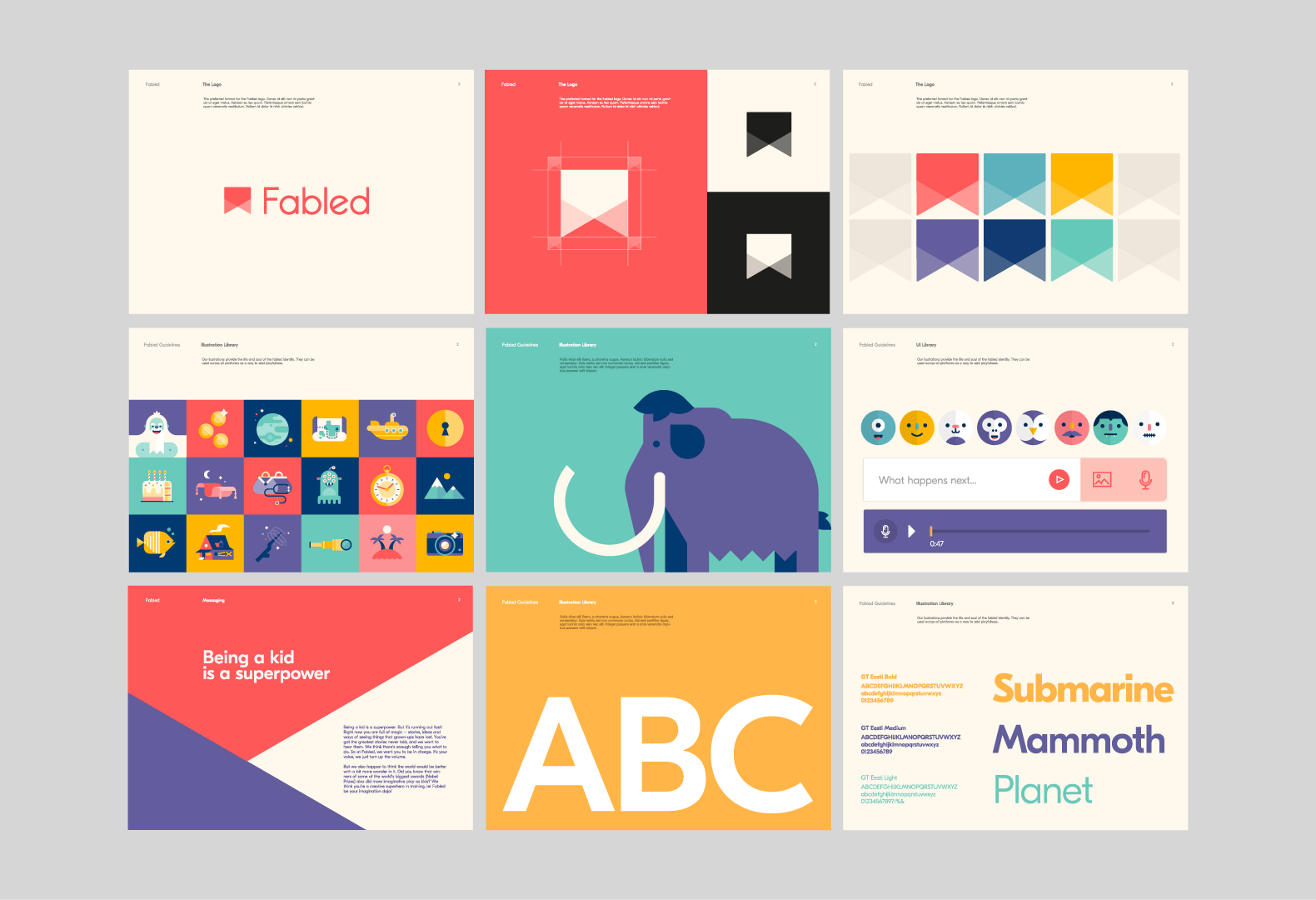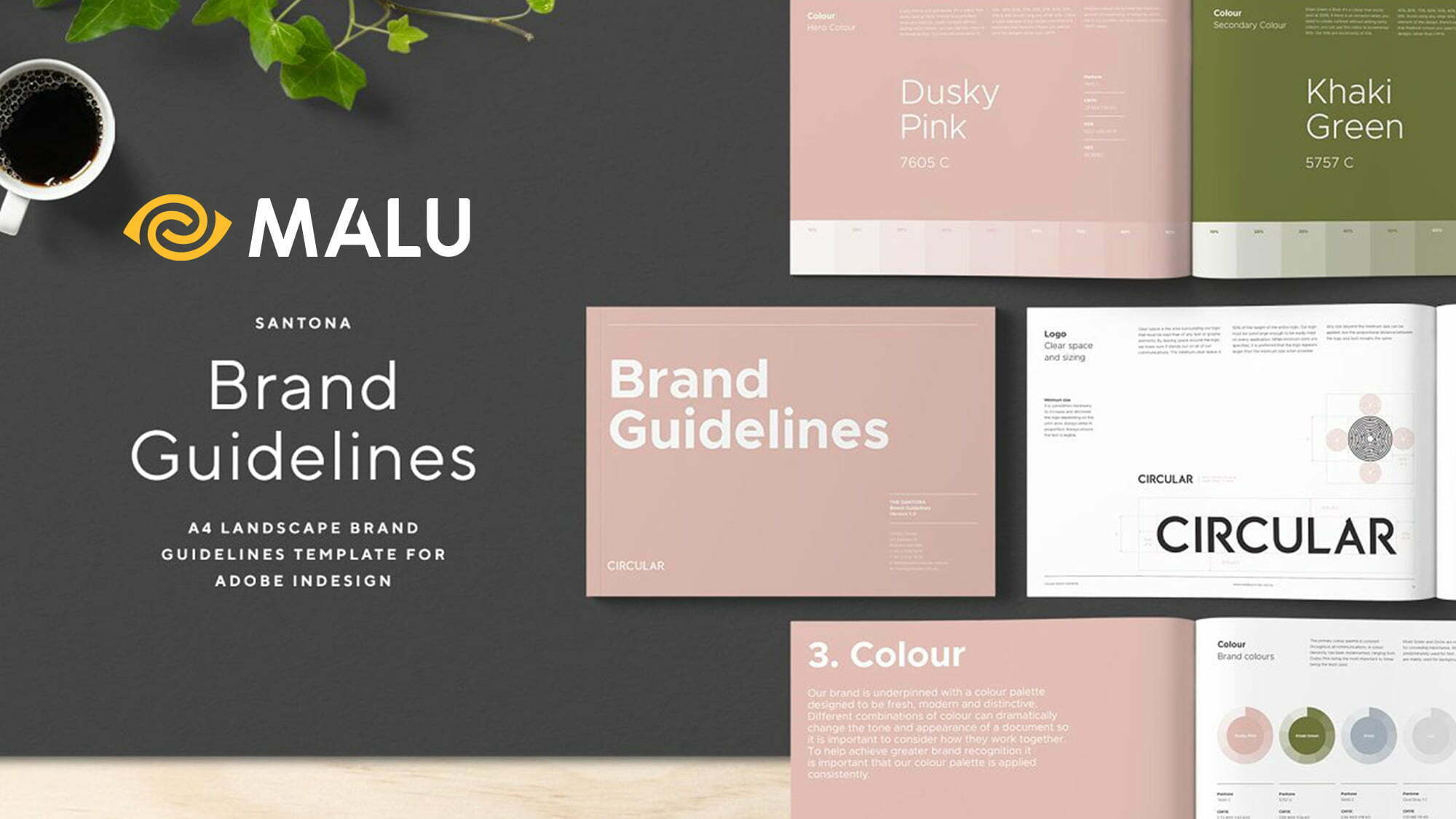Brand Booklet
 brand booklet outlines the key elements of brand and serves as a guide for maintaining brand consistency across all communications. Brand books are an essential part of our identity and reflects our values, vision, and personality. This booklet will provide you with an overview of our brand guidelines to help you understand how to use our brand assets effectively and consistently.
brand booklet outlines the key elements of brand and serves as a guide for maintaining brand consistency across all communications. Brand books are an essential part of our identity and reflects our values, vision, and personality. This booklet will provide you with an overview of our brand guidelines to help you understand how to use our brand assets effectively and consistently.
Brand Identity: Our brand identity is the visual representation of our brand, including our logo, colors, typography, and imagery. It is crucial to maintain consistency in our brand identity to create a cohesive and recognizable brand image.
Logo: Our logo is the most prominent visual element of our brand. It should always be used in its original form and not altered or modified in any way. The minimum size of our logo should be no smaller than 1 inch in width, and clear space should be maintained around the logo to ensure it is visually distinct.
Colors: Our brand colors are an essential part of our identity. The primary brand colors are [insert specific colors], and they should be used consistently in all our communications. When using our brand colors, make sure to use the exact color codes provided in our brand guidelines to maintain consistency across all materials.
Typography: Our brand typography is the set of fonts used in our communications. The primary font for our brand is [insert specific font name], and it should be used consistently in all our materials. Additional fonts may be used for specific purposes or applications, as outlined in our brand guidelines.
Imagery: Our brand imagery includes photos, illustrations, and graphics that are used in our communications. Imagery should align with our brand personality and tone and should be relevant to our brand and audience. Stock images should be used sparingly, and whenever possible, original, high-quality imagery should be used to create a unique and authentic brand image.
Brand Voice and Tone: Our brand voice and tone reflect the personality and style of our brand. Our brand should have a consistent voice and tone in all communications, whether it’s written, spoken, or visual. Our brand voice should be [insert brand voice description], and our brand tone should be [insert brand tone description]. It is crucial to align our brand voice and tone with our target audience and brand positioning.
Messaging: Our brand messaging is the content and language used in our communications. It should be consistent with our brand personality, values, and positioning. Our messaging should clearly convey our brand promise, unique selling proposition (USP), and key benefits to our target audience. All messaging should be reviewed and approved by our brand management team to ensure consistency and alignment with our brand guidelines.
Brand Applications: Our brand is applied across various touchpoints, including print and digital materials, advertising, social media, packaging, signage, and more. It is essential to follow our brand guidelines consistently across all these applications to ensure a cohesive and recognizable brand image. Detailed instructions on how to use our brand assets, including logo usage, color codes, typography, imagery, and other brand elements, can be found in our brand guidelines.
Conclusion: Our brand is a valuable asset that represents our company and shapes how our audience perceives us. It is essential to maintain brand consistency to build brand recognition, trust, and loyalty. By following our brand guidelines outlined in this booklet, you will help us create a strong and consistent brand image that resonates with our target audience and reinforces our brand positioning. If you have any questions or need further guidance, please refer to our brand management team or our brand guidelines for more information. Thank you for your commitment to upholding our brand standards.
What should be included in a brand book?
 A brand book, also known as a brand guidelines or brand style guide, is a comprehensive document that outlines the visual and verbal elements that represent a brand’s identity. It serves as a reference for anyone involved in creating marketing materials or communicating on behalf of the brand to ensure consistency and coherence across all touchpoints. While the specific content of a brand book may vary depending on the brand and its industry, the following elements are typically included:
A brand book, also known as a brand guidelines or brand style guide, is a comprehensive document that outlines the visual and verbal elements that represent a brand’s identity. It serves as a reference for anyone involved in creating marketing materials or communicating on behalf of the brand to ensure consistency and coherence across all touchpoints. While the specific content of a brand book may vary depending on the brand and its industry, the following elements are typically included:- Brand Identity: This section includes the brand’s logo, variations of the logo, and guidelines on how to use the logo correctly, including size, spacing, color options, and clear space requirements. It may also include information on the brand’s tagline or slogan.
- Color Palette: This section outlines the brand’s color palette, including primary and secondary colors, along with their corresponding RGB, CMYK, and HEX codes. It may also include guidance on color usage, such as color combinations to avoid, and color usage in different contexts, such as digital and print.
- Typography: This section provides guidance on the typography that represents the brand, including the primary and secondary fonts used in marketing materials, website, and other brand communications. It may include specifications on font sizes, weights, and styles, as well as guidance on how to use fonts effectively.
- Imagery: This section includes guidelines on the types of images and visuals that are consistent with the brand’s visual identity, including photography, illustrations, and graphics. It may specify the style, tone, and mood of the imagery, as well as any restrictions or usage guidelines.
- Brand Voice and Tone: This section outlines the brand’s personality, voice, and tone in written communications. It may include guidance on the language style, vocabulary, and messaging that is consistent with the brand’s identity and target audience. It may also include examples of brand messaging for different contexts or platforms.
- Brand Applications: This section provides guidance on how the brand should be applied across various touchpoints, such as business cards, letterheads, email signatures, social media profiles, packaging, and signage. It may include templates or examples of how the brand should be used in different contexts.
- Brand Usage and Misuse: This section outlines the proper usage of the brand and any restrictions or limitations, including what not to do with the brand. It may include guidance on avoiding misrepresentation, distortion, or misuse of the brand, as well as instructions on how to handle situations when the brand is used incorrectly.
- Brand History and Background: This section provides an overview of the brand’s history, values, mission, and vision. It may include information about the brand’s founders, story, milestones, and any relevant background information that helps contextualize the brand’s identity.
- Additional Brand Elements: Depending on the brand, the brand book may also include additional elements such as icons, patterns, textures, or other visual or verbal elements that are relevant to the brand’s identity and usage.
- Contact Information: Finally, the brand book should include contact information for the brand’s marketing or brand team, including names, emails, and phone numbers, for reference and clarification on brand-related matters.
It’s important to note that the content and structure when creating a brand can vary depending on the brand’s size, complexity, and industry. However, a well-designed brand book should provide clear and comprehensive guidelines that ensure consistent and effective brand communication across all channels and touchpoints.
What is a brand book used for?
 A brand book, also known as a brand guidelines or brand style guide, is a comprehensive document that outlines the visual and verbal elements that represent a brand. It serves as a reference tool for maintaining consistency and coherence in a brand’s communication across different channels and touchpoints. A brand book typically includes the following:
A brand book, also known as a brand guidelines or brand style guide, is a comprehensive document that outlines the visual and verbal elements that represent a brand. It serves as a reference tool for maintaining consistency and coherence in a brand’s communication across different channels and touchpoints. A brand book typically includes the following:- Brand Identity: It includes the brand’s logo, color palette, typography, and other visual elements that form the brand’s identity. It outlines the correct and consistent use of these elements across various applications such as print, digital, social media, packaging, signage, and more.
- Brand Voice and Tone: It outlines the preferred tone of voice, language, and messaging that reflects the brand’s personality and values. This section may include guideline logo for writing style, tone, and messaging for different target audiences and communication channels.
- Brand Messaging: It includes the key messages, taglines, and positioning statements that communicate the brand’s unique value proposition, brand promise, and overall messaging strategy.
- Brand Usage Guidelines: It provides instructions on how the brand elements should be used, including minimum clear space, size requirements, and usage restrictions. This section ensures that the brand’s visual identity is used consistently and correctly in all marketing and communication materials.
- Brand Applications: It provides examples and guidelines on how the brand elements should be applied in various contexts, such as print and digital advertising, social media, email signatures, business cards, letterheads, and other collateral.
- Brand History and Background: It may include the brand’s history, mission, vision, values, and other contextual information that helps stakeholders better understand the brand’s heritage and positioning.
A brand book serves as a valuable resource for internal teams, external partners, and stakeholders to maintain consistency and coherence in a brand’s communication and ensure that the brand is represented accurately and effectively across all touchpoints. It helps to establish a unified and strong brand identity that resonates with the target audience, builds brand recognition, and creates a memorable brand experience.
What does a brand book do?
 Branding document outlines the visual, verbal, and experiential elements that make up a brand’s identity. It serves as a reference tool for maintaining brand consistency across all communications and touchpoints, both internal and external. Here are some key functions of a brand book:
Branding document outlines the visual, verbal, and experiential elements that make up a brand’s identity. It serves as a reference tool for maintaining brand consistency across all communications and touchpoints, both internal and external. Here are some key functions of a brand book:
- Brand Identity: A brand book defines the visual elements that make up a brand’s identity, including the logo, colors, typography, imagery, and other visual assets. It provides guidance on how these elements should be used consistently across various applications, such as print materials, digital media, packaging, and signage.
- Brand Voice and Messaging: A brand book establishes guidelines for the brand’s voice and messaging, including the tone, language, and style of communication. It ensures that the brand’s messaging is consistent and aligned with its values, personality, and positioning.
- Brand Usage: A brand book provides clear instructions on how the brand elements should and should not be used. This includes guidelines on minimum size, clear space, proportions, and other specifications to maintain the integrity and legibility of the brand across different media and platforms.
- Brand Applications: A brand book provides examples and guidance on how the brand should be applied to various touchpoints, such as stationery, packaging, website, social media, advertising, and other marketing materials. It ensures that the brand is consistently represented and applied in a cohesive manner across different channels.
- Brand Consistency: A brand book serves as a reference tool for internal and external stakeholders to ensure consistency in how the brand is represented. It helps to avoid brand inconsistencies and misuse of brand assets, which can dilute the brand’s impact and message.
- Brand Protection: A brand book includes guidelines on how to protect the brand’s intellectual property, including proper use of trademarks, copyrights, and other legal considerations. It helps ensure that the brand is used in a way that protects its legal rights and prevents unauthorized usage.
Overall, a brand book serves as a comprehensive guide that helps to establish and maintain a consistent and cohesive brand identity across all touchpoints, which is essential for building brand recognition, loyalty, and trust among consumers.
What is a brand book?
 A brand book serves as a reference guide for internal and external stakeholders, providing guidelines on how a brand should be consistently represented across various communication channels, including marketing materials, advertising campaigns, social media, packaging, and more.
A brand book serves as a reference guide for internal and external stakeholders, providing guidelines on how a brand should be consistently represented across various communication channels, including marketing materials, advertising campaigns, social media, packaging, and more.
A brand book typically includes information such as the brand’s logo usage, color palette, typography, imagery, tone of voice, messaging, and other visual and verbal elements that define the brand’s identity. It may also provide guidance on how to use the brand assets in different contexts, specify rules for brand extensions, and offer examples of do’s and don’ts to ensure consistent and cohesive brand representation.
Brand books are important tools for maintaining brand consistency and integrity, as they help ensure that all communications and materials related to a brand are aligned with its established identity and positioning. They are commonly used by marketing and creative teams, as well as external partners such as advertising agencies, design firms, and other vendors who create content on behalf of the brand.
What are other names for brand book?
 A brand book, also known as a brand guide or brand style guide, may also be referred to by other names depending on the context or industry. Some alternative names for a brand book include:
A brand book, also known as a brand guide or brand style guide, may also be referred to by other names depending on the context or industry. Some alternative names for a brand book include:
- Brand Manual
- Brand Guidelines
- Brand Bible
- Brand Identity Guide
- Brand Standards
- Brand Handbook
- Brand Playbook
- Brand Style Manual
- Brand Rulebook
- Brand Design Guide
- Brand guidelines template
These terms are often used interchangeably to refer to a comprehensive document that outlines the visual and verbal elements of a brand, including its logo, colors, typography, tone of voice, and other brand assets. The purpose of a brand book, regardless of the name used, is to provide guidance and consistency in how a brand is presented across various platforms and touchpoints, ensuring a cohesive and unified brand identity.
Frequently Asked Questions (FAQs)
What is the primary purpose of a brandbook?
A brandbook serves as a comprehensive guide outlining the visual and verbal identity of a brand. It ensures consistency in communication, helping businesses establish a strong and memorable brand presence.
How often should a brandbook be updated?
While the core elements of a brandbook remain timeless, it’s essential to review and update it when there are significant changes in your brand’s identity, values, or visual elements.
Is a brandbook only for large businesses?
No, businesses of all sizes can benefit from a brandbook. It provides a roadmap for consistent brand communication, which is crucial for creating a recognizable and trustworthy brand, irrespective of size.
Can a brandbook be digital?
Absolutely. In the digital age, many brands opt for digital brandbooks, offering interactive and dynamic content. This format allows for easy updates and accessibility across various platforms.
How does a brandbook contribute to brand loyalty?
A well-defined brandbook creates a cohesive and memorable brand experience. When customers consistently encounter a brand that aligns with its promises and values, it fosters trust and loyalty.
Can a brandbook evolve with changing trends?
Yes, a brandbook can evolve to incorporate new trends while maintaining its core identity. Regularly reviewing and updating the brandbook ensures it stays relevant and resonates with the target audience.
Conclusion
Embark on your brand’s journey with the knowledge and insights gained from this comprehensive guide on Brandbook design. Crafting a compelling brandbook is not just a design endeavor; it’s a strategic investment in building a brand that stands the test of time.

